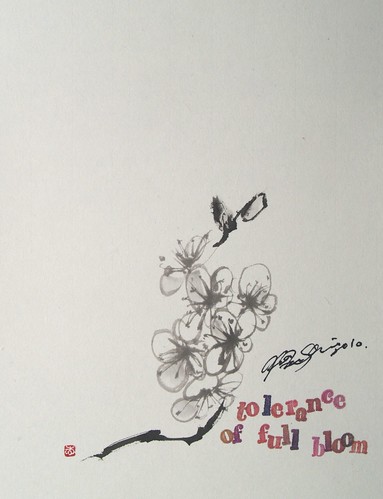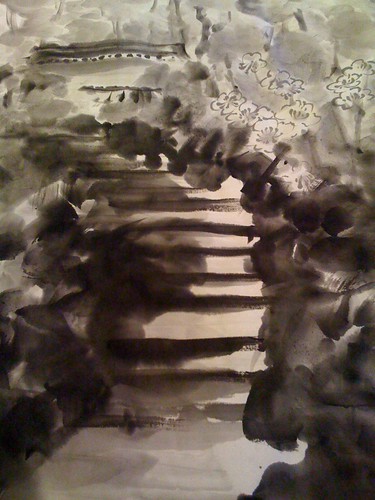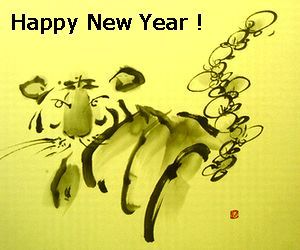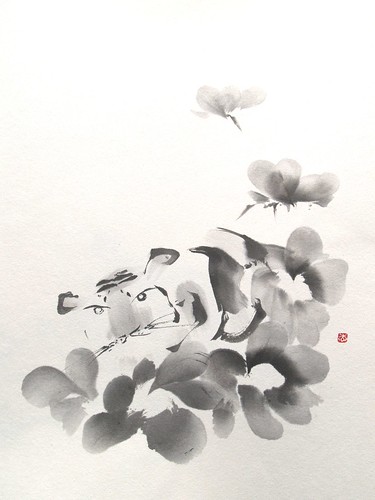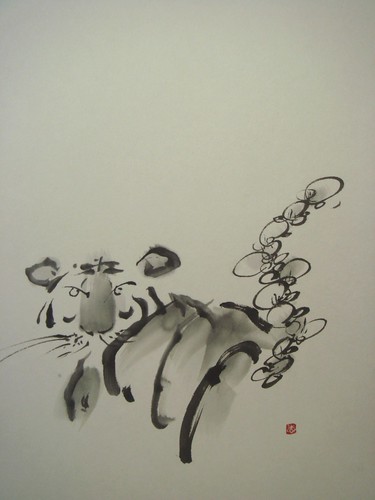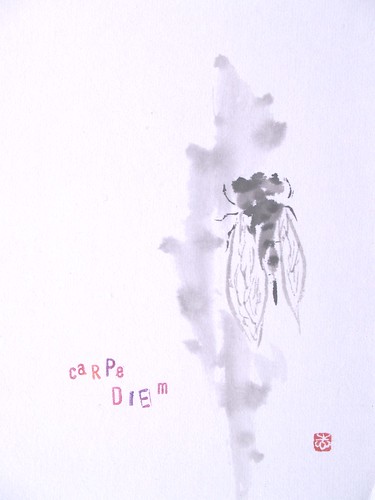
November 1st is the day of the dog in Japan. There is some twists trick.. I am going to unbundle it.
November 1st is depicted by the numbers of three in a row "1". so we got three one.
The dog barks ‘wan, wan, wan’ in Japan. What about your place??
Then, now you got it. The combination with English pronounciation of 1 to dog barking in Japanese have mixed and someone sets the dog of the day on Nov. 1. I didn’t know it was the day, though. YouTube featured some of dog related video in associated with the dog day including my vid.
■ たらしこみ Tarashi-komi ■
I used ‘tarashi-komi’ technique in drawing dog in this video. Trashi-komi technique originated Sotasu Tawaraya, 17 century’s painter. He painted a dog with this technique. My try in this video is inspired with him. ‘Tarashi’ means ‘drop’ or ‘weep’ in English and the conjugation of ‘tarasu’. ‘Hana-tarashi’ boy is a kid with always nose running.(hana is nose) 🙂
‘Komi’ is used for emphasis.
So, What I drop emphasisly, or so much is water. ‘Tarashi-komi’ technique use the water a lot. Fisrt, you put only water directly on the paper. Then, put sumi-ink on the water teritory. The sumi-ink will diffuse until the boader line of the water penetration area.
In tarashi-komi technique, you need to controll the uncontrollable water movement. The water spreads out in slow. So, drop the water then take a breathing, relaxing. It goes forward step by step in watching the water drop pervasive.
The volume of water is necessary to take care. That affect not only on the water itself penetration area, but also on the sumi-ink soaking which decides the tatste of painting. The part where you drop the water a lot would be the veichle which carries and spreads out the sumi-ink around. The light water area would be the slow car. The speed of the move is faseter than you might expect. Your dog will be growing to the cow.. It is no use craying over spilled milk ::)
Now you might know you have to watch out the volume of sumi-ink drop. Yes. It would be better that the first sumi-ink drop make it a small portion and observe the spread speed of it.
I guess I put too much attention note.
The joy of the tarashikomi is on the unpredictable sumi-ink spread. The exuding of sumi-ink enable to depict the fluffy hair of dog, like toy poodle. Overglaze sumi-ink with the water can express uncountable things.
It is no necessarry to draw the accurate line in order to get what is real. The tarashikomi technique gives you the cuteness of what you saw. It is 2 dimentional manga way of thinking. 2D can express much more than 3D can sometime.
so, please enjoy the tarashi-komi.
Tips:
1. Water job
■ Draw the shape with the water only brush. Drawing line will dissapear when dried. The line will become the dizzy Long Wall when the tarashikomi sumi-ink spread. Sumi-ink invasion is supposed to stop on the line.
■ Put only water in the brush, then paint the water on the far away point from the line. That avoids the water going beyond the line.
■ Please remember the area wet becomes the drawing shape in the tarashikomi technique. The sumi-ink won’t go beyond where the water carried it away.
■ Now you got the water job done.
2. Sumi-ink Job
Then we are in the sumi-ink process.
■ Please don’t drop or paint the sumi-ink near the water boader. Sumi-ink spread power is huge. It is more than you think. So, you need to handle the sumi-ink process with care. Otherwise, your sumi-e will grow like balloon.
■ Put sumi-ink and take a breath until it stops diffusing. The next sumi-ink drop will be done, then. Need patience. Be calm.
■ The edge of exuding sumi-ink might be the good expression of fluffy hair. You can levarage it.
Enjoy 🙂


